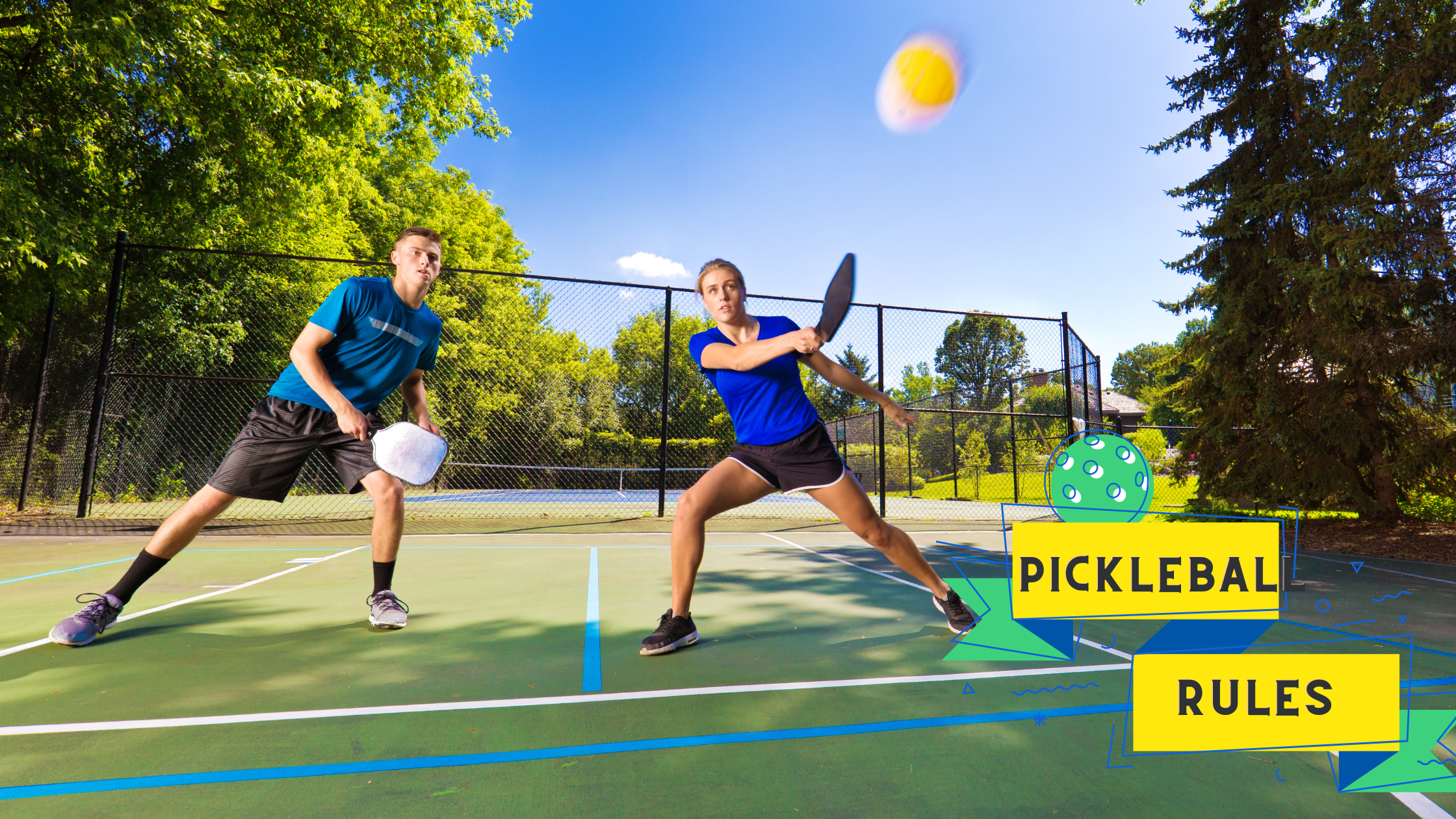Playing any game, you are always eager to score the best possible points and win the match. You are also concerned about the rules that govern the game, which the association always defines.
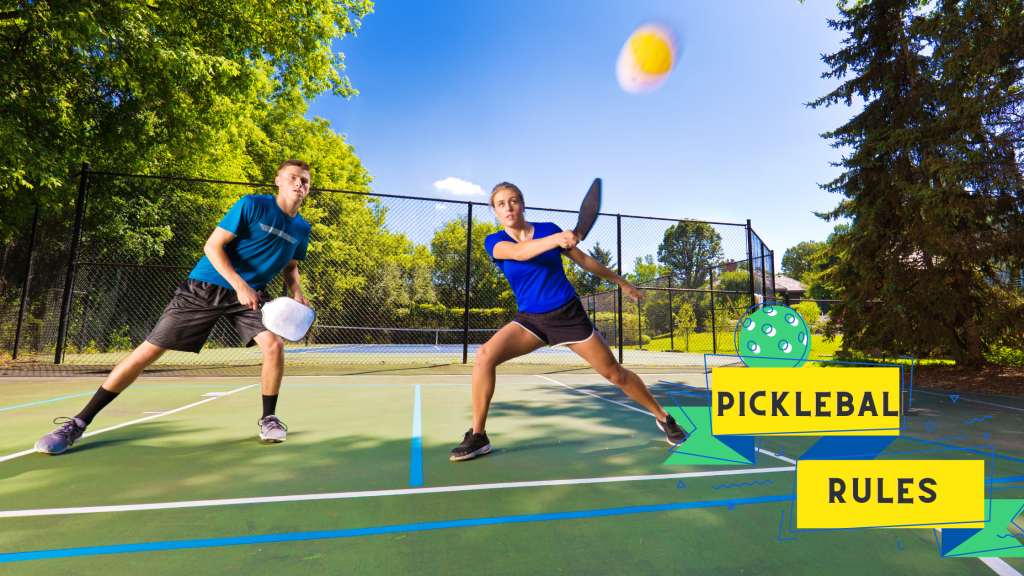
The rules of any game are the basics for any game or sport, so pickleball rules are essential, too. They define the scope of the game and give it its shape. So, there can be no proper game without rules. Here, we will present the top pickleball rules you must know before playing.
What Are Basic Pickleball Rules?
Below are the basic pickleball rules that you must know before playing:
- Rule Of Court And Dimension
- Serving Sequence Rules
- Serving Rules
- Double Bounce Rule
- No-Volley Rule
- Second Bounce Rule
- Out Of Bounds Rule
- Net Rule
- Scoring Rule
- Call-Out rule
- No electronic devices rule
- Lost Equipment Can Sometimes Cost You
- The 10-Second Rule And Timeouts
Rule Of Court And Dimension
The court’s configuration must be finalized to play a pickleball game.
There are two primary components of a standard pickleball court: the net and the playing area. To start a game of pickleball, the players need a net to divide the court into two halves.
A standard pickleball court must be 44 feet long by 20 feet wide and 36 inches high, with a 44-foot sideline and a 20-foot baseline on either side. There should also be two 44-foot sidelines and two 20-foot baselines that form the court’s architectural perimeter.
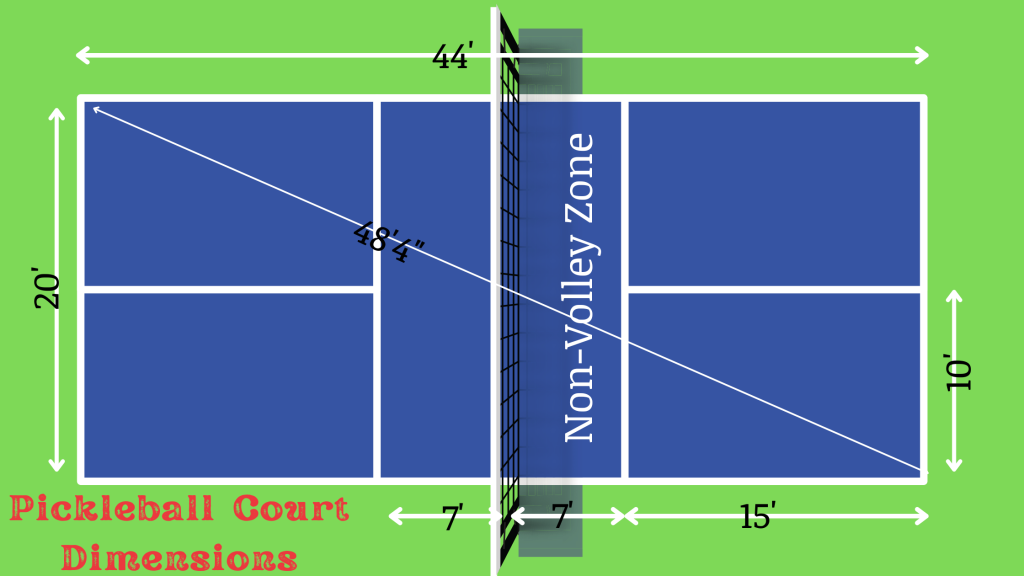
Players may not hit the ball anywhere but these two sidelines and baselines. On each side of the net are seven-foot “non-volley lines,” which identify “the non-volley zone,” also known as the “kitchen.” Players are not allowed to enter this area to volley the ball. The two non-volley lines are each 20 feet (the non-volley line) on each side of the net. Each side is cut through the middle by two lines that do not continue into the non-volley zone.
Serving Sequence Rules
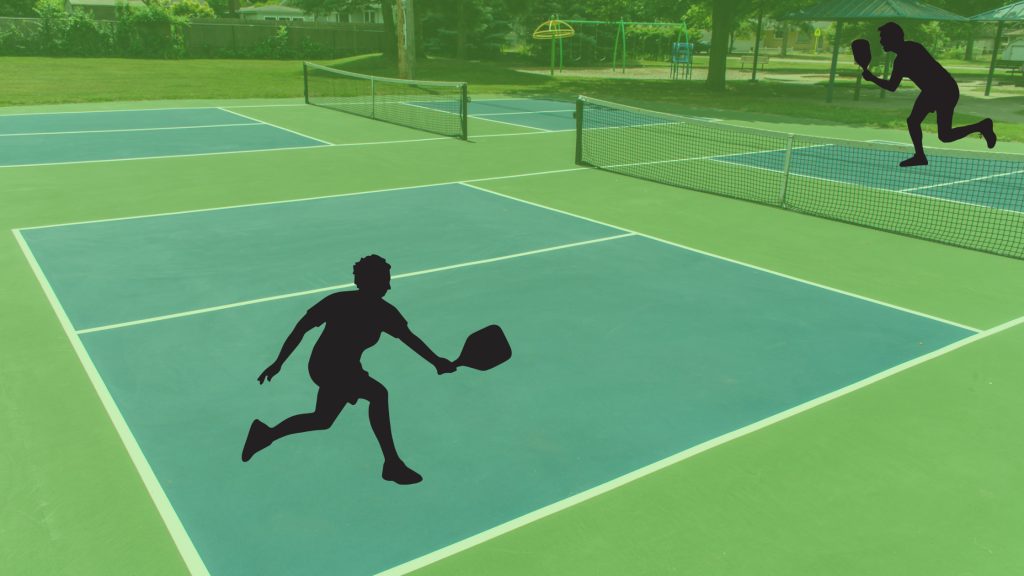
Serving Sequence is one of the popular pickleball rules and strategies used by players who want to win at a high level. It involves serving in a specific order, and the goal is to get your opponent to make a mistake. Serving Sequence is an easy-to-learn pickleball strategy that can help you master this sport and become a better player.
One serves in the first inning of pickleball and initiates each point. Assuming that you’re serving the ball, the pickleball can be served by the player on the left side. If this first serve results in one point, the subsequent serve is on the left side of the court. Every time the point is won, the other reverts back to the left side. Only the serving team can win points. For the opposing team to score, they must win the server before winning the rally.
The recipient of the ball goes up to the opposing team if the non-serving team wins a rally. The following examples apply if the non-serving team wins. This spirit implies the initial transfer of the ball to the next server. When the second server starts a rally, the ball is passed over the net to the other side, a conditional team serving from the court’s right side. It continues until the conclusion of the game.
Serving Rules
One of the most important aspects of pickleball is the serve, which is the basic among pickleball rules. You must know how to serve the ball properly and have good form to ensure that you can hit it with the right amount of spin. As soon as you understand how to serve the ball, you’ve developed the capability to control its origins from head to toe. Before it’s served to you, you may need to drop the ball first with one hand and hit with the other from below the waist without bouncing, pass over the net.
After crossing the service line in the opposite court, the service is prohibited. A serve can be hit in either forehand or backhand motion, and only one of the motions can be violated. If the other motion is violated, the server has violated a service sequence rule and must surrender service duty to the teammate or opponent who violated it.
The server must stay completely behind the baseline and directly behind the left or right service area (based on which side they are serving from) while serving. The ball cannot hit an area other than the diagonally opposite service court. Each serve begins from the left side (“even court”) and must land in the opponent’s right service area; each serve starts from the left and must land in the left service area. If you want to read more about this rule, you can check the detailed article “Pickleball Serving Rules.”
Double Bounce Rule
If you’re a pickleball player, you’ve probably heard about the “double bounce rule” before. It’s a simple concept that can help you improve your game. But is it true? And does it actually work? Let’s find out.
The double bounce rule is one of the pickleball rules and regulations that are unique to the game. During the game, the competitor must have the opportunity to allow the ball to bounce once before it’s returned. Then, it is necessary to bounce the ball on the opposing team’s side before the next hit attempt.
To review:
- The serve must bounce once on the returning team’s side.
- The return shot must bounce once on the serving team’s side.
- The ball may then be legitimately returned after a single bounce, or volleyed.
This rule continues to apply throughout the act of serving and returning. Even though that rule may not apply during a fault, if a fault occurs during the process of double bounce, it still counts as any other usual fault would. The double bounce rule makes it more difficult for players to rack up points.
No-Volley Rule
When I first started playing pickleball in 2007, there was a pickleball rule that you couldn’t hit a ball that was already in play. I remember being confused when I first saw it because I was used to volleyball, where you could hit any part of the net. I soon learned that the rule was designed to make the game fun and interesting for spectators. It was also a great way to protect the players from getting hurt. But is this rule still relevant today? And if so, how can you use it to your advantage? Let’s find out.
After the double-bounce rule has been spotted and players can have started volleying the ball, the no-volley rule in Pickleball rules plays a vital role in the sport. There are seven-foot spaces on either side of the net on any pickleball court. Together they form the no-volley zone, commonly known as the kitchen.
The no-volley rule indicates that a player cannot go into the kitchen to volley the ball. This includes stepping on the line leading up to the no-volley zone early or late during the volley. If a player violates the no-volley rule, it is considered a fault against the volleying player or team. While the no-volley rule can potentially lessen the adrenaline level of pickleball, it can be a lot of fun to be careful not to cross the line.
If players were allowed to volley from the kitchen, many might end quickly, intense competitions. Making players stand back a little and toss volleys from a distance makes them more engaged, and the activity makes them more imaginative with their shot selections.
Second Bounce Rule
For the most part, I have always been a fan of the “no volley rule” in pickleball. It has been my opinion that this is the best way to play pickleball. However, after doing some research on the subject, I found that there is a second bounce rule in pickleball. In this part, I will explain this second bounce rule and why it is important to know about it.
A second bounce is one of the most common errors when playing pickleball. The ball must not bounce on the same side of the net twice before it’s returned. Failure to return a shot after bouncing counts as a fault. Only if the second bounce rule does not apply is wheelchair pickleball played between gamers who access wheelchairs.
In this pickleball version, the ball may be returned to the court if it bounces two times. In non-wheelchair pickleball, the second bounce fault only applies to bounces with one legal bounce within the opponent’s area and one outside. Only the first bounce must be within their area. If it is not, the opponent has violated the out-of-bounds rule, and a second bounce is inconsequential. The second bounce rule offers the option of playing that game from the kitchen, which isn’t risky. The most fundamental aspect of pickleball is the rule concerning the second bounce. This allows gamers to advance at a reasonably fast pace.
Out-Of-Bounds Rule
Among other pickleball rules, this one ensures that the ball stays on the court and that the players remain on their feet. It also ensures that the game is fair.
In pickleball, a hit is intended to bounce in the opponent’s side, giving players a 20 x 22-foot area to land the ball from a non-service shot. Failure to abide by this mandate results in players committing a fault called out of bounds. A pickleball shot that touches any part of the court that bounds it is not deemed to be inbound. Even if the ball touches the line, it must have touched the inbound to be considered inbounds.
If the ball touches the inbound line and also any part of the court out of bounds, it is counted as inbounds. The out-of-bounds rule encourages players to play the game as close to the boundary as possible, making it difficult for them to return the ball. Skilled players may try to make the ball bounce as close as possible to the boundary to make it more difficult for the rival to process it.
Net Rule
One of the most noticeable features of a pickleball court is the net. Pickleball nets are not only a feature but also a necessity. Without a net, players would easily hit each other with their balls, and the game would be over in seconds. Players frequently hop the ball on the net so that it bounces up and can be played over again. Without the net, it would be difficult to make consistent shots, and there would be no game.
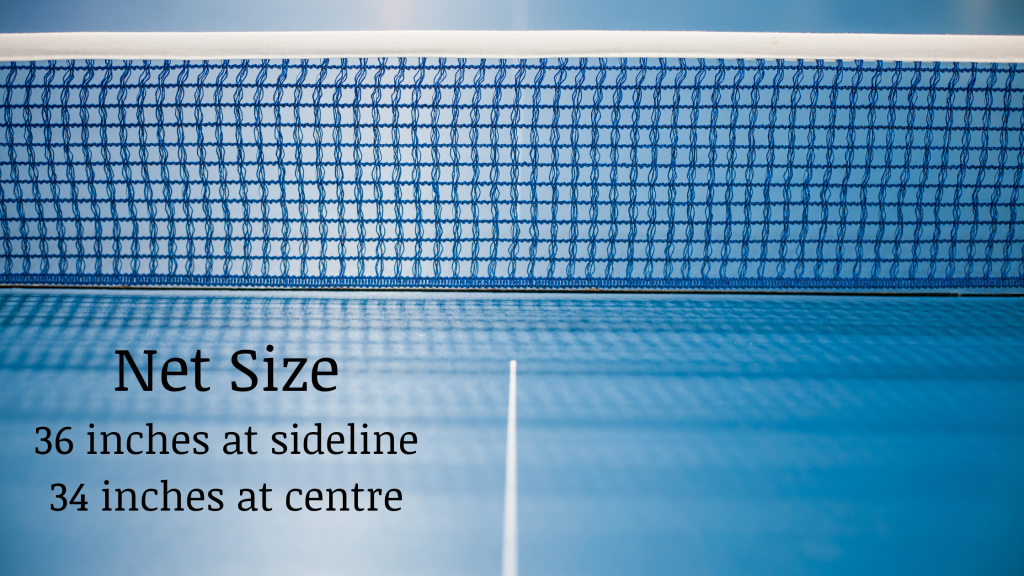
The net has proven to be an ultra-efficient tool that undeniably enhances the quality of pickleball matches. A regulation-sized pickleball net is 36 inches (3 feet) high at the sidelines, it covers the whole centerline, and the net is pulled almost (but not quite) completely taut to sag in the middle: the net’s height at its centre is 34 inches. This divot allows the player to get a good look at the ball as it comes down and forces the player to hit a shot from the middle of the court.
Scoring Rule
The scoring rule in a pickleball game is very important. If you do not know how to score, you may find yourself in a situation where you lose the game. There are several ways to score a point in a pickleball game. Here are some examples:
- The server hits a ball into the court, and the server wins the point.
- The server hits a ball into the court, and the server losses the point.
- The server hits a ball into the court, and the server does not lose the point.
The team that is serving in pickleball is only permitted to earn a score. The winning team’s score may equal or exceed the score resulting from the subsequent team’s mistake. Both teams still intend to win each match, as building a winning score by the non-serving team will permit their team to serve once more, and that non-serving team could have a chance to build a better score. Pickleball games are played to 11 points, but the winning team must win by two.
If a side reaches 11, but the other team is at ten, the game continues until one team has a two-point edge. The game is over until one team has a two-point advantage over the other. Scoring totals may vary, especially in tournaments. Tournaments often have an 11-vs.-15-vs. or 11-vs.-21-vs. Structure.
Call-Out rule
There is a specific way to indicate the score in pickleball. Calling out the score is a crucial part of the game; it is important to help remember the score, but the call-out also refers to which side will serve next. Unlike most sports where the score is called out, such as basketball, the call- outdone in pickleball consists of three numbers.
The first value, “1” indicates the opposing team’s score, the second value, “2” specifies the home team’s score, and the third is a 1 or a 2. Thirdly, the third value will indicate whether and in how far the winning team’s server was faulted. If it’s a 1, then the winning team continues on its first server. A 2 means that the second server is serving, and the winning side consequently incurs a side out.
No electronic devices rule
The pickleball court is a place to socialize and have fun. But, some rules must be followed to maintain a respectful and enjoyable environment for all players. One of the most important pickleball rules is the no electronic devices rule. Electronic devices can be very distracting and make it difficult to focus on your game. This is also to ensure that the game is played fairly and that players do not cheat.
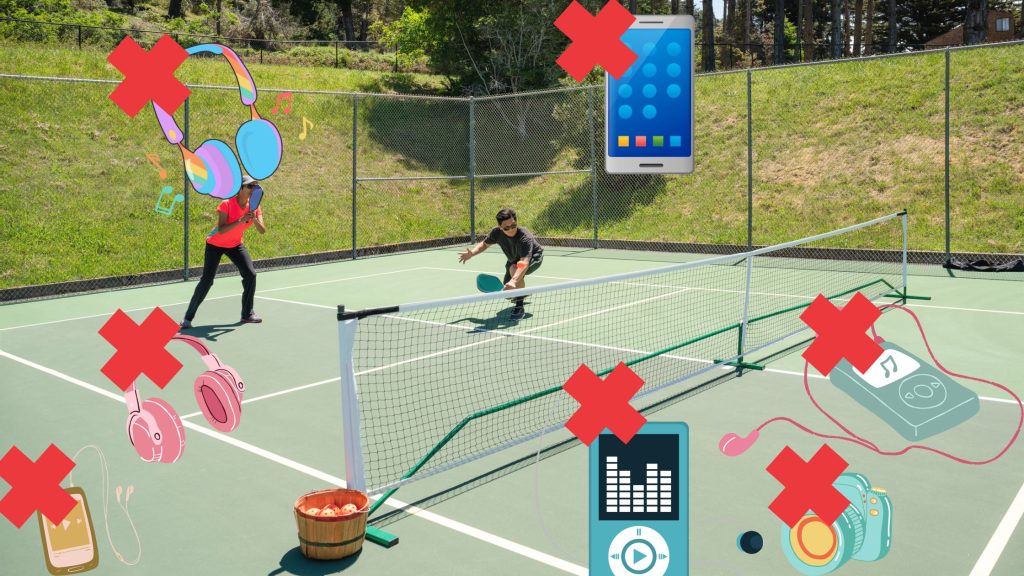
Players should not bring any electronic devices onto the court with them. This includes cell phones, music players, and any other type of device that could potentially disrupt the game or bother other players. If a player needs to use their phone for any reason, they should step off of the court and away from the other players.
This rule is necessary so that everyone can enjoy the game and stay focused on playing. It also helps to create a more social atmosphere on the court, as players will be talking to each other instead of looking at their phones.
Lost Equipment Can Sometimes Cost You
Pickleball is generally played outside, so players wear caps, sunglasses, goggles, sweatbands, and other gear during the game. From time to time, these accessories may go flying off, which can result in a distraction or, in extreme cases, a penalty. Is such accidental point loss affected by temporary equipment loss?
A volley, or hitting the pickleball before it bounces, is treated as a fault if the item lands on the non-volley line. In other words, if a player hits the ball into the air and an item falls into the non-volley zone, that is considered a point toward their opponent. If the item is not on the bounce when it lands in the non-volley zone, then nothing is to blame.
If equipment lands anywhere in the non-volley zone, on the court or otherwise, the play keeps going. This pickleball rule is intended to be both simple and logical: even if the pickleball rebounds off the lost item, play will nonetheless continue. The ball will be very difficult to measure perhaps, so be attentive not to go easy on your clothing or the hat you are wearing lest you disqualify yourself.
The 10-Second Rule And Timeouts
The 10-second rule is a simple way to keep the game of pickleball moving. If the ball is not hit within 10 seconds, the point is awarded to the other team. This rule encourages players to keep moving and makes the game more fast-paced.
Timeouts are another important part of pickleball rules. Each team is allowed one 30-second timeout per game. This time can be used to regroup and strategize between points. Timeouts are a great way to catch your breath and plan your next move.
FAQs – Pickleball Rules
Final Verdict
To be successful at pickleball, you must have a good set of skills, a strong knowledge of the game, and good coordination. You need to know all the top pickleball rules that are a must-follow in this game, like how to read the court, hit the ball, return the ball, and play defense.
